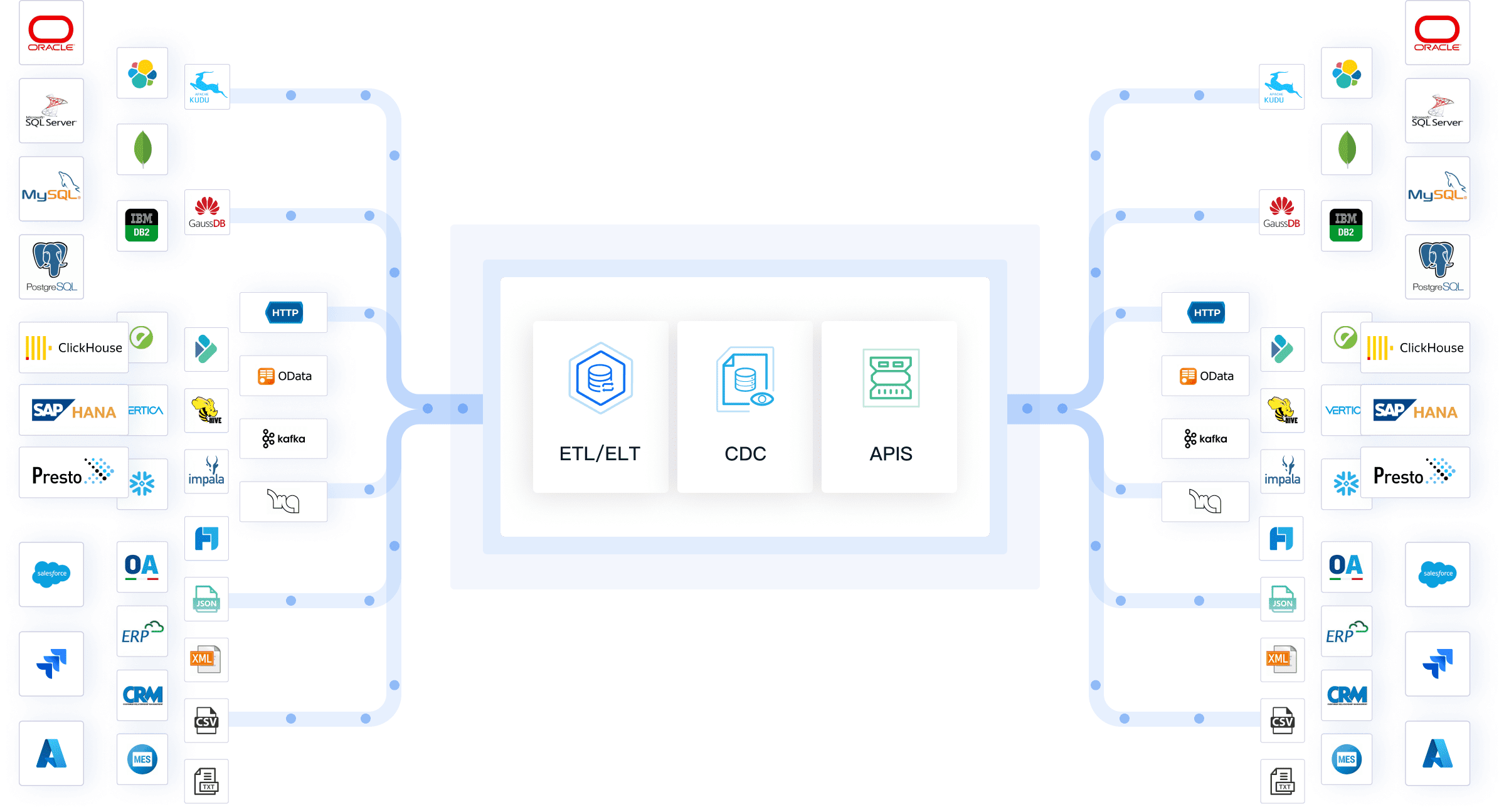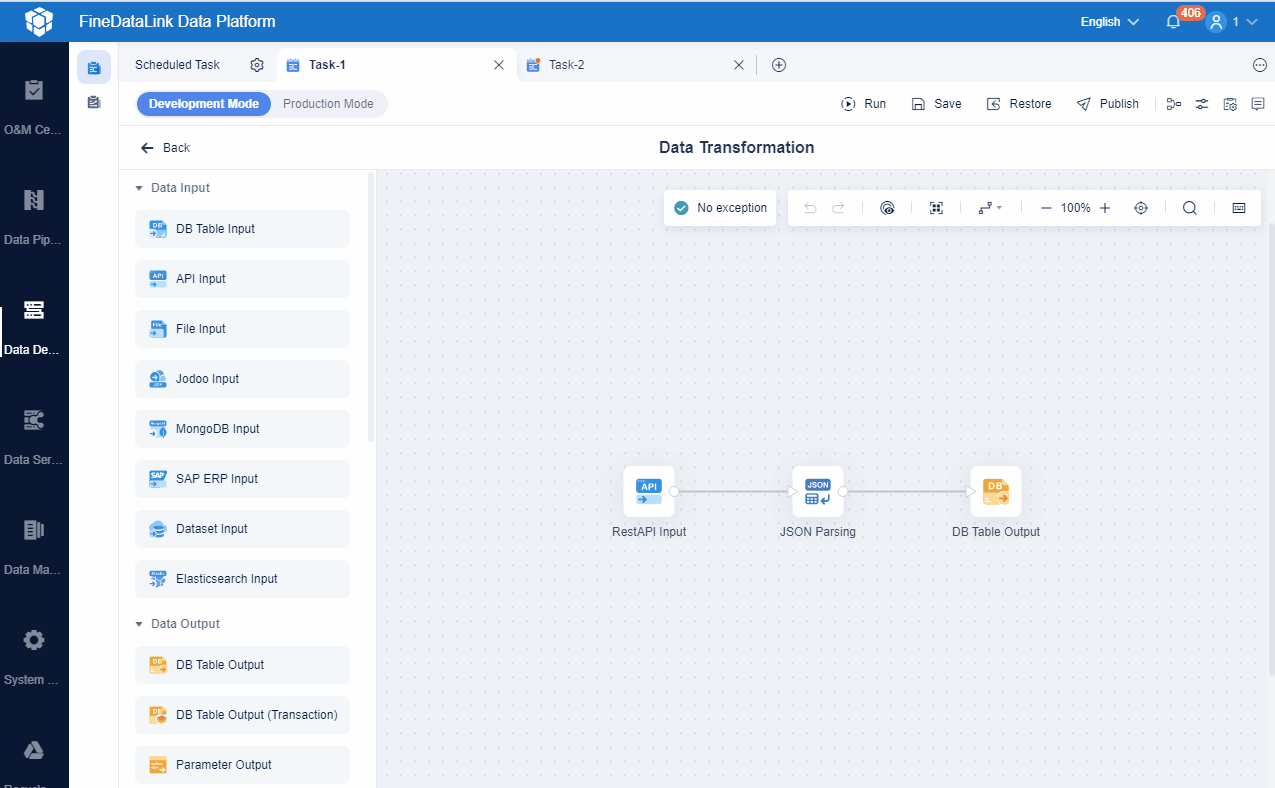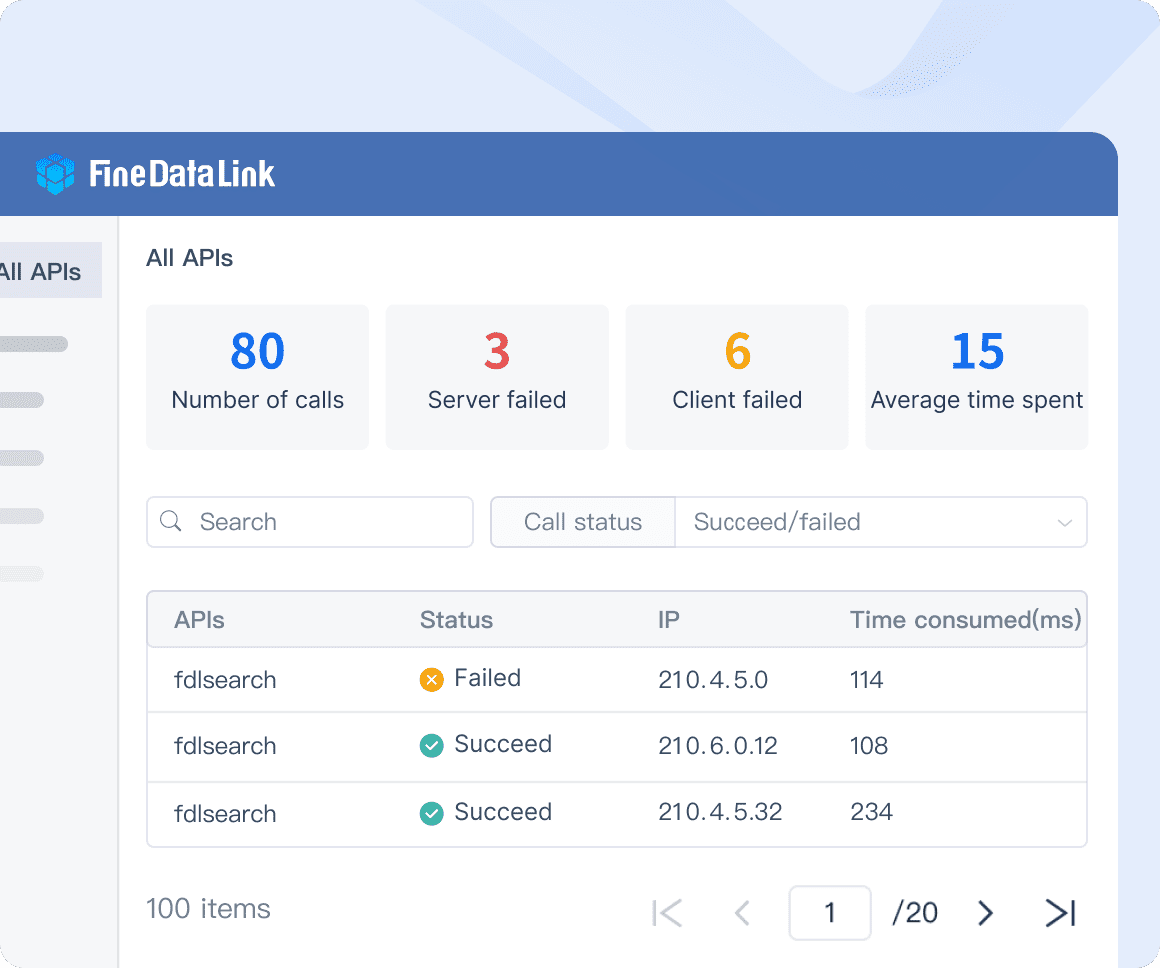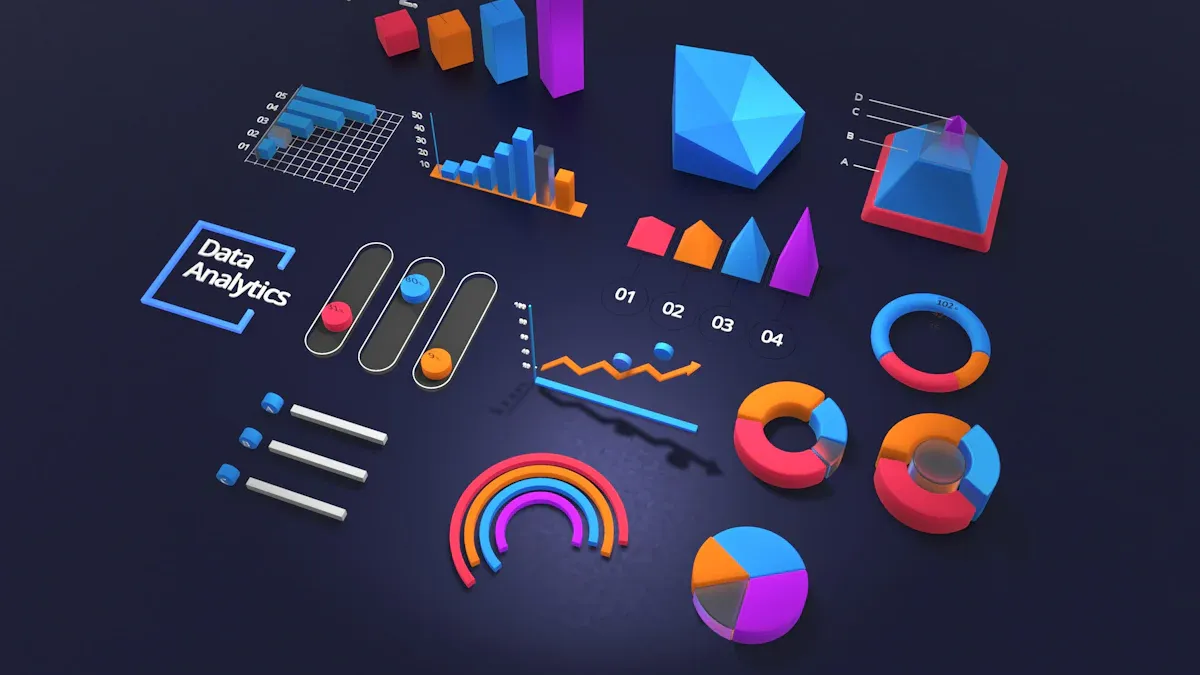Selecting the right data ingestion tools requires careful attention to several key factors. You need to ensure the tool can handle your data sources, volume, and compliance needs. The following table highlights the most important criteria:
| Criteria | Description |
|---|---|
| Scalability | Ability to manage growing data volumes efficiently. |
| Data Quality Management | Tools for validation and cleansing to ensure accurate data. |
| Data Security and Compliance | Features that protect sensitive data and support regulatory standards. |
| User-Friendly Interface | Intuitive design that supports easy adoption. |
| Integration with Analytics Tools | Seamless connection to BI platforms for data-driven decision making. |
| Cost-Effectiveness | Value for money and total cost of ownership. |
Matching these features ensures you get the right data to the right place, streamline data management, and support business growth.
Key Features of Data Ingestion Tools

When you evaluate data ingestion tools, you need to focus on several core features that determine how well the solution will fit your business needs. Each feature plays a critical role in building a robust data integration platform that supports your data ecosystem and future growth.
Scalability
Scalability is essential for any data ingestion tool. As your business grows, your data volumes will increase. You need a data integration platform that can handle both current and future workloads without performance issues. Leading data ingestion tools use techniques like incremental data processing and change data capture to reduce system load. Many modern solutions leverage cloud-native architecture, which allows for elastic resource allocation. This means you can scale up or down based on your needs, ensuring efficient use of resources.
| Best Practices | Description |
|---|---|
| Streamlining systems | Make complex systems reliable and efficient for high data volumes. |
| Automation and observability | Manage real-time data ingestion effectively. |
- Implement incremental data processing to reduce system load.
- Use change data capture to identify modified records.
- Leverage cloud platforms for elastic scaling.
Cloud platforms such as Amazon Kinesis offer elastic resources that adjust to varying workloads. This flexibility ensures your data integration platform remains efficient as your data grows.
Integration Options
Integration options define how well your data ingestion software connects with your existing systems. The best data ingestion tools support a wide range of data sources and destinations, including databases, APIs, SaaS applications, and data warehouses. You should look for a data integration platform that provides both pre-built and custom connectors. This flexibility allows you to connect to any system in your data ecosystem.
- Source and destination support for databases, APIs, SaaS apps, and data warehouses.
- Real-time and batch processing capabilities.
- Scalability and parallel processing.
- Built-in ETL or ELT features for data transformation.
Leading data ingestion tools often include a large library of built-in connectors. For example, FineDataLink supports over 100 common data sources, making it easy to integrate data from different platforms. This broad compatibility is crucial for organizations that use products from multiple IT vendors.

Real-Time vs Batch
You need to decide whether your business requires real-time data ingestion or batch data ingestion. Real-time data ingestion is vital for scenarios where immediate processing is necessary, such as fraud detection or real-time analytics. Batch data ingestion works best for large volumes of data that do not require instant processing, such as historical analysis or data warehousing.
| Feature | Real-Time Ingestion | Batch Ingestion |
|---|---|---|
| Latency | Immediate processing, continuous data flow | Processes data at scheduled intervals |
| Use Cases | Financial transactions, real-time analytics | Data warehousing, historical analysis |
Most organizations now recognize the importance of real-time data ingestion. According to industry research, up to 90% of organizations require real-time data processing, and 70% plan to implement real-time analytics by 2026. When choosing a data ingestion tool, ensure it supports both real-time and batch data ingestion workflows to meet your current and future needs.
Data Quality
Data quality is a critical factor in any data integration platform. High-quality data leads to better business decisions. Some data ingestion tools include built-in validation and cleansing features, while others simply import data without checks. You should choose a data ingestion tool that actively monitors and improves data quality during the ingestion process.
Effective data ingestion monitoring is essential for any organization that relies on timely and accurate data for decision-making.
- Use data visualization tools to identify outliers and anomalies.
- Establish automated checks and alerts to flag data issues.
- Implement validation rules and integrity constraints.
A strong focus on data quality ensures that your data ecosystem remains reliable and trustworthy.
Security
Security is non-negotiable when dealing with sensitive business data. The best data ingestion tools support industry-standard certifications and compliance frameworks. Look for a data integration platform that offers features such as encryption, access controls, and audit trails.
| Certification | Description | Industries Benefiting |
|---|---|---|
| SOC 2 | Ensures data security and privacy for SaaS providers | Technology, Healthcare, Financial |
| ISO/IEC 27001 | Framework for managing sensitive data securely | Healthcare, Retail, Manufacturing |
| CSA STAR | Cloud-specific security measures, integrates with ISO/IEC | Government, Telecommunications, Media |
- SOC 2 enhances security posture and reduces breach risks.
- ISO/IEC 27001 provides global compliance.
- CSA STAR ensures adherence to cloud-specific standards.
A secure data integration platform helps you meet regulatory requirements and protects your business from data breaches.
Automation
Automation reduces manual intervention and increases efficiency in data ingestion workflows. Modern data ingestion tools offer features like change data capture for real-time sync, integration with ETL solutions, and automated error handling. Automated scheduling and monitoring ensure that data is collected promptly and processed efficiently.
- Change Data Capture (CDC) for incremental replication.
- Integration with dbt for post-load transformations.
- AI-powered connector builders for rapid development.
- Multiple sync modes, including incremental append and deduplication.
- Automated workflows that validate data on arrival.
Automating your data ingestion workflows leads to faster processing, fewer errors, and more consistent results.
Cost
Cost is a major consideration when selecting a data ingestion tool. Pricing models often depend on data volume, frequency of data transfer, data complexity, and cloud provider fees. Efficient data ingestion software can help reduce overall costs by optimizing resource usage and minimizing unnecessary data movement.
| Factor | Description |
|---|---|
| Data volume | Higher data volumes increase costs. |
| Frequency of data transfer | Real-time syncs are more expensive than periodic batch updates. |
| Data complexity | Complex transformations require more compute resources. |
| Data transfer fees | Cloud providers may charge for moving data between regions or services. |
| Data ingestion efficiency | Optimized workflows can significantly reduce costs. |
"Ingestion costs were a major concern for us, taking up 50% of our warehouse compute. After some optimization, we brought it down to 20% but it remained a significant expense. Transitioning to a data lake architecture with Fivetran has the potential to eliminate these costs entirely, offering even greater savings."
Choosing a cost-effective data integration platform like FineDataLink can help you manage expenses while maintaining high performance.
User Experience
User experience can make or break your adoption of a data ingestion tool. Look for a data integration platform with a visual, drag-and-drop interface. This feature allows you to build and manage data ingestion workflows quickly, even if you lack coding skills.
| Feature Description | Benefits |
|---|---|
| Visual development environment with drag-and-drop | Enables quick building and management of pipelines |
| Drag-and-drop visual interface for designing data flows | Facilitates quick building, monitoring, and updating |
| Visual transformation designer with 100+ components | Simplifies complex pipeline creation for non-coders |
FineDataLink stands out with its modern, web-based interface and support for over 100 data sources. Its drag-and-drop features and detailed documentation make it accessible for both technical and non-technical users. This ease of use accelerates deployment and reduces training time, helping your team focus on extracting value from your data.
A user-friendly data integration platform ensures that your team can build, monitor, and update data ingestion workflows efficiently, supporting your business as it grows.

Matching Data Ingestion Tools to Your Business
Choosing the right data ingestion tool starts with a clear understanding of your data management needs. You should assess your current data landscape before making a decision. This process involves looking at your data sources, volume, processing requirements, compliance obligations, and business goals.
Data Sources and Volume
You need to identify the types and locations of your data. Data sources can include files, databases, applications, streaming data, and IoT devices. The volume and format of your data will influence which tool fits best. Consider the following factors:
| Factor | Description |
|---|---|
| Format | Type of data (structured, semi-structured, unstructured) |
| Frequency | Real-time or batch processing |
| Size | Amount of data the tool can manage |
| Extraction | Where data is gathered from (IoT, apps, databases) |
| Volume | Ability to scale with growing datasets |
| Data flow visualization | Tools for analyzing data movement |
FineDataLink offers out-of-the-box connectivity to over 100 data sources, supporting both cloud and on-premises platforms. This flexibility ensures you can manage diverse data volumes efficiently.

Processing Needs
You should determine how you want to process your data. Some businesses need batch processing for scheduled updates, while others require real-time processing for immediate insights. Common processing tasks include validation, cleansing, deduplication, aggregation, and format revision.
- Batch processing suits periodic updates, such as daily sales reports.
- Real-time processing enables instant analytics and decision-making.
- Data transformation ensures your data is ready for business intelligence.
FineDataLink supports both ETL/ELT workflows and API integration, allowing you to tailor processing to your requirements.

Compliance
Regulated industries must meet strict compliance standards. You should check if the tool supports requirements like HIPAA for healthcare or GDPR for privacy. Key compliance features include encryption, access controls, automated audits, and secure storage.
- HIPAA demands strong encryption and access management.
- GDPR requires privacy controls and breach notifications.
- Automated audits and reporting simplify regulatory tasks.
FineDataLink provides robust security and governance features to help you meet these obligations.
Business Goals
Align your data ingestion strategy with your business objectives. For example, NTT DATA Taiwan used a unified data platform to integrate backend systems and support data-driven decision-making. By choosing a tool that matches your goals, you can improve operational efficiency and foster innovation.
You should create a roadmap that connects your data strategy to your business vision. FineDataLink's real-time sync and flexible integration options help you achieve these goals, whether you focus on customer-centric development or industry analysis.

Common Pitfalls with Data Ingestion Tools

When you select a data ingestion tool, you need to watch out for several common pitfalls. Overlooking these issues can lead to project delays, increased costs, and poor data quality. Understanding these challenges helps you make better decisions and avoid setbacks.
Scalability Overlooked
Many businesses underestimate the importance of scalability in a data ingestion tool. If you do not plan for growth, your system may struggle with larger data volumes in the future. This can cause performance bottlenecks and slow down your operations. You should always choose a data ingestion tool that can scale as your business and data needs expand.
Neglecting scalability often results in performance issues and operational inefficiencies. You need to address code architecture and database optimization early to support future growth.
Integration Complexity
Integration complexity is a frequent challenge with data ingestion tools. You may face issues like incompatible data formats, synchronization problems, or difficulties mapping data between systems. These problems can delay projects and increase the risk of pipeline failures.
| Complexity Type | Description |
|---|---|
| Compatibility Issues | Source and destination systems may not align due to different data structures. |
| Data Mapping Challenges | Aligning formats and structures across systems can be difficult. |
| Performance Bottlenecks | Large data volumes can slow down processing. |
FineDataLink's broad connector support and low-code interface help you manage integration complexity. Its visual tools make it easier to connect diverse systems and handle schema changes.
Data Quality Gaps
Poor data quality can undermine your entire data strategy. If your data ingestion tool does not validate or cleanse data, you risk importing duplicates, errors, or incomplete records. This leads to unreliable analytics and bad business decisions.
You should look for a data ingestion tool with built-in validation, cleansing, and monitoring features. FineDataLink offers automated checks and clear documentation to help you maintain high data quality.

Cost Underestimation
Underestimating the total cost of ownership is a common pitfall with data ingestion tools. Hidden expenses, operational overhead, and vendor lock-in can quickly exceed your budget.
| Financial Consequence | Description |
|---|---|
| Unexpected Expenses | Hidden costs can lead to budget overruns. |
| Operational Overhead | Complex processes increase ongoing costs. |
| Vendor Lock-In | Long-term contracts may limit flexibility and raise expenses. |
FineDataLink provides transparent pricing and efficient workflows, helping you control costs and avoid surprises.
Training Neglected
Neglecting user training can slow down adoption of your data ingestion tool. If your team does not understand the platform, you may face errors and inefficiencies. Choose a tool with clear documentation, tutorials, and a user-friendly interface.
FineDataLink’s detailed guides and low-code design make it easy for both technical and non-technical users to get started quickly.
By staying aware of these pitfalls and choosing a robust data ingestion tool like FineDataLink, you can build a reliable, scalable, and cost-effective data integration solution for your business.
Data Ingestion Tools Checklist
When you compare data ingestion tools, you need a clear and actionable checklist. This helps you focus on the features that matter most for your business. A well-structured evaluation ensures you select a data ingestion tool that aligns with your goals and supports your data strategy.
Criteria Table
Use the following table to compare each data ingestion tool you consider. This checklist covers strategic alignment, pricing, scalability, processing options, support, and security. Review each criterion to see how well a data ingestion tool meets your needs.
| Criteria Type | Description |
|---|---|
| Strategic Criteria | Aligns with your data, enterprise architecture, and IT strategy. |
| Pricing Criteria | Offers transparent pricing and fits your budget. |
| Scalability and Performance | Handles large data volumes and maintains strong performance. |
| Batch vs Real-time Processing | Supports both real-time and batch data ingestion workflows. |
| Customer Support | Provides reliable support to resolve issues quickly. |
| Security and Compliance | Meets industry standards and regulatory requirements for data protection. |
You can use this table to score or rank each data ingestion tool. This approach makes it easier to see which solution best fits your business.
Fast Evaluation Tips
Quickly evaluating data ingestion tools saves you time and helps you focus on the best options. Consider these factors during your initial review:
| Factor | Description |
|---|---|
| Interface | Choose a data ingestion tool with an interface that matches your team's skills and needs. |
| Format | Check if the tool supports the types and structures of your data. |
| Security | Ensure the tool provides strong access controls for sensitive information. |
| Interoperability | Confirm compatibility with all your data sources and destinations. |
| Frequency | Decide if you need real-time or scheduled data ingestion. |
| User-friendliness | Select a tool that non-technical users can operate with minimal training. |
After you review these factors, you can narrow down your choices and focus on the most promising data ingestion tools.
FineDataLink stands out as a data ingestion tool that offers cost-effectiveness and a broad feature set. It supports over 100 data sources, provides a user-friendly interface, and delivers both real-time and batch processing. You can include FineDataLink in your evaluation to see how it meets your business requirements.

You need to focus on the data ingestion process when selecting a tool for your business. Review how each solution manages the data ingestion process, supports pipelines, and ensures data quality. The right data ingestion process will help you build reliable pipelines that scale with your needs. Always match the data ingestion process to your business goals and compliance requirements. Test the data ingestion process with a pilot project or request a demo. Strong pipelines and a clear data ingestion process will drive better results for your organization.

Continue Reading About Data Ingestion Tools
Enterprise Data Integration: A Comprehensive Guide
What is enterprise data and why does it matter for organizations
Understanding Enterprise Data Centers in 2025
Enterprise Data Analytics Explained for Modern Businesses
FAQ

The Author
Howard
Data Management Engineer & Data Research Expert at FanRuan
Related Articles

Best Data Lake Vendors For Enterprise Needs
Compare top data lake vendors for enterprise needs. See which platforms offer the best scalability, integration, and security for your business.
Howard
Dec 07, 2025

Top Data Ingestion Platform Compared
Compare the top 7 data ingestion platforms, including real-time features, integration, scalability, and pricing to find the best fit for your business.
Howard
Dec 04, 2025

Best Data Lake Companies For Enterprise Needs
Compare top data lake companies for enterprise needs. See which platforms excel in scalability, integration, security, and analytics for businesses.
Howard
Dec 04, 2025



